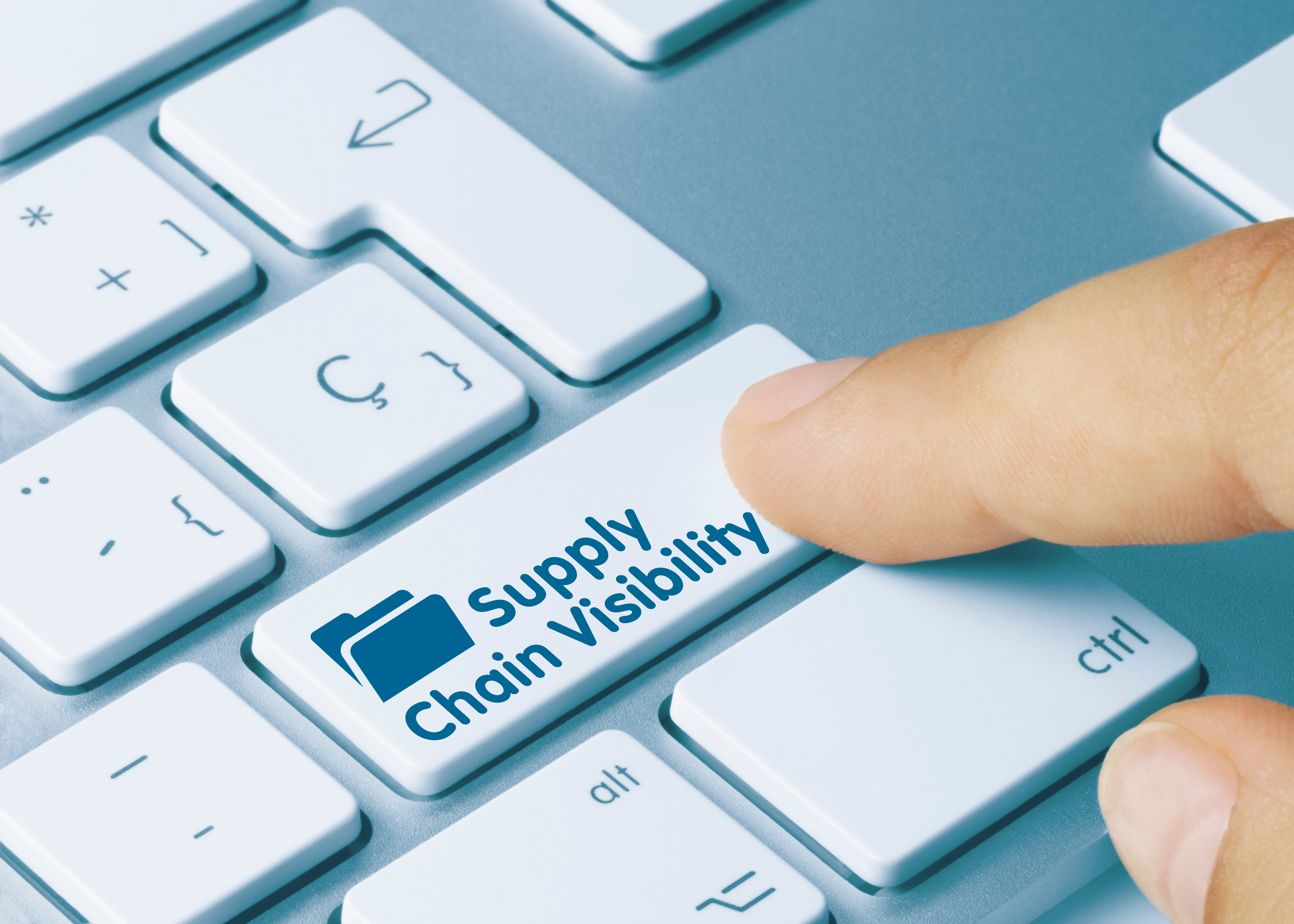Supply chain transparency—knowing where all your business’s inputs come from and being open about their origins—is crucial not just for product quality, consumer safety, and your reputation, but also for building trust and stronger trading relationships with suppliers and partners.
Transparency in food industry supply chains is often linked to the 'farm to fork' concept, which focuses on traceability. However, transparency extends beyond ingredients to include other inputs like packaging and sourcing practices.
Traceability and transparency are closely related yet distinctly different concepts. Traceability indicates that your business tracks everything that occurs upstream and downstream in the supply chain. Transparency in the supply chain means that you and your suppliers share key information when required. This includes providing relevant data to one another, within your own business, and to customers or regulatory bodies when necessary
Why supply chain transparency is so important
Supply chain transparency allows your customers to enjoy your products confident in the knowledge that they are genuine, safe, and ethically produced. At the same time it is a requirement from a regulatory perspective. For example, the Modern Slavery Act requires businesses to provide evidence that slave labour is not used within your business’s supply chains.
Other transparency laws aim to combat issues like deforestation, the use of harmful chemicals and unnecessary environmental damage. Then, there are laws that govern the safety and integrity of foods, and to comply with them, making supply chain transparency a requirement.
What is required for supply chain transparency?
The ideal outcome of your transparent supply chain should be reinforcement of your reputation as an ethical business that consumers can trust. At the same time, it helps you to demonstrate compliance with laws that protect consumers, society, and the environment. This requires partnerships with suppliers who care about the big issues as much as you do and are willing to share the information you need. Key principles include:
Visibility
Visibility is a fundamental requirement for a transparent supply chain. In other words, you need to know every step that ingredients or products take on their journey to your business. For example, you must have information on how raw materials are produced and how they are handled, processed, transformed and transported.
Data integration
While supply chain transparency can be achieved through manual processes, data integration enhances visibility by enabling seamless information flow with minimal intervention. Digitally connected systems allow you to demonstrate due diligence in supplier selection, make informed decisions based on real-time data, and efficiently track, monitor, and verify the status of purchased goods
Stakeholder communication
Transparency involves sharing information downstream while ensuring clear, comprehensive, and accurate communication upstream. Stakeholders must collaborate to address mutual concerns and work together towards achieving transparency throughout their shared supply chain, helping to improve decision-making and strengthen business operations.
Business benefits of supply chain transparency
Regulatory compliance
Regulatory compliance can be something of a minefield, and the food industry is governed by a variety of laws that underline the need for supply chain transparency. Examples of dedicated transparency laws include:
- The EU Corporate Sustainability Due Diligence Directive (CSDDD)
- The EU Deforestation Regulation (EUDR)
- The Corporate Sustainability Reporting Directive (CSRD)
- The Belgian Vigilance Proposal
- The Denmark Act on sustainable Value Chains
- The Norwegian Transparency Act
- The UK Modern Slavery Act
- The Food Safety Modernization Act (FSMA) 204 - USA
- The California Transparency in Supply Chains Act (CTSCA)
- The Uyghur Forced Labor Prevention Act (UFLPA) - USA
- The SEC’s Proposed Climate Disclosure Rules - USA
Transparency is not only necessary for complying with specific transparency laws, but it is also a prerequisite for proving adherence to food safety and provenance regulations. For example, if you sell products with a Protected Designation of Origin (PDO) and Protected Geographical Indication (PGI), you must be able to show that they come from the regions implied by the product name. This requires transparency in the food supply chain. Transparency is essential across all areas of the supply chain, including food safety. For example, maintaining the cold chain is critical when working with products that require refrigeration or freezing, but transparency is equally important for stable products to ensure quality and compliance throughout the entire supply chain..
Brand and business reputation
Consumer confidence and brand reputation rely on transparency. When violations (e.g. ethical violations) occur within a supply chain, businesses face public scrutiny, even if they were unaware of the issue. Negative publicity can lead to consumer distrust, regulatory action, and financial losses, making supply chain oversight a critical priority.
The chocolate industry has faced backlash over child and forced labor in cocoa farming, leading to lawsuits and damaged brand trust. Similarly, the fashion industry suffered reputational harm after the 2013 Rana Plaza factory collapse, which exposed unsafe working conditions in garment production. The food sector has also seen scandals, such as the 2013 horse meat incident in Europe, which raised concerns about traceability and supplier integrity. (Food Empowerment Project, U.S. Department of Labor, The Guardian)
To protect their reputation, businesses must implement supplier audits, enforce ethical and responsible sourcing, and invest in technologies such as traceability tools, ERP systems, and PLM platforms. These technologies enable greater transparency across the supply chain, reducing regulatory risks and fostering consumer trust. By prioritizing digital solutions for supply chain management, companies are better equipped to meet increasing demands for corporate accountability and operational efficiency.
Business efficacy through supply chain visibility
Transparency means sharing information both internally and externally. It also implies visibility - being able to gain a clear picture of entire supply chains. Multiple business benefits spring from this.
- Transparent supply chains allow you to assess risks and work with supply chain partners to address them.
- Market awareness helps you to develop contingency plans and build resilience.
- Knowledge of your supply chain options ensures that you have greater control over the quality of inputs.
- If issues arise, supply chain visibility helps you to pinpoint where and how they happened, thereby empowering you to resolve them faster.
- Overall, food supply chain transparency contributes to the long-term profitability of your business by opening up new markets and enabling better, more informed decision-making.
Key challenges in achieving supply chain transparency
Ensuring reliable traceability and transparency across supply chains can be challenging without the right tools and processes in place. While many businesses still rely on paper-based or spreadsheet models, implementing digital systems can significantly streamline and enhance your transparency efforts.
Although your business is committed to transparency, the accuracy of the information you share depends on the quality of the data you have at your disposal. That means you have to be certain that all players within the supply chain are sharing accurate information. Besides this, the data must be organised in a usable, uniform format and as many reporting processes as possible should be automated.
To achieve this, you and your supply chain partners must be open to collaboration, and you will require a platform where this takes place. In certain contexts, particularly agricultural production, outdated processes and systems can present an obstacle. For example, farmers in remote areas may have limited access to technology, and the supply chain must find ways to overcome this.
Fortunately, there are ways to cut through the complexity, unifying supply chains with traceability and transparency as the primary goals. From first principles to execution, the following elements come together to overcome transparency challenges.
Practical steps to build a transparent supply chain
Building a transparent supply chain requires a mixture of organisational commitment, cooperation between businesses, and enabling technology. Your internal policies will guide you, so they are a logical starting point.
Transparency policy
Beginning with your own organisation, formulate a transparency policy that captures your approach to information-sharing. It will act as a guide to decision-making and should include supplier performance and information-sharing requirements based on risk assessments.
Laws that impact transparency in the markets where your business is active can guide you, indicating what type of information will be needed. Although they may not be required by law, you may also wish to add information sharing elements that relate to product quality and perceptions. For example, a business may wish to position its products as “organic,” and this will mean collecting and sharing additional information.
Data collection and integration systems
For true transparency, you will need detailed information, and food supply chains can be incredibly complex. Large volumes of data, sometimes coming from multiple sources and global stakeholders, must be collected, analysed and shared.
To achieve transparency, you must share and receive data. The easiest way to achieve this is via a secure cloud based system or platform. Data held in this system must be meaningful and easily translatable into conclusions that guide your actions. It should also be accessible to relevant stakeholders including suppliers and retailers.
Data analytics and reporting systems
Data is only as useful as the analytics that flow from it. Trying to collate and interpret vast volumes of data by hand is too time-consuming to be practical. Errors can creep in, and conclusions may only be reached long after they are of any use. Use intelligent technologies and software to provide real-time insights. A configurable supply chain management platform can allow you to map your processes digitially, providing essential features needed for efficient operations.
Enhance supplier communication and build partnerships
Your suppliers’ cooperation will be essential, and communication will be key, so discuss your supply chain transparency requirements and their role in supporting your efforts. Keeping communication channels open using a dedicated platform to foster cooperation is important.
Implement analytics-driven decision-making
Your supply chain management software should offer analytics that help you to review supplier performance, keeping a scorecard for reference. It should also be able to offer you real-time market data, allowing you to model and assess alternatives and determine risks. This allows you to base your decisions on data, ensuring traceability and improving supply chain transparency, while maintaining quality, and profitability.
Technology as a key enabler of transparency
Once you have mapped supply chains and have gained an understanding of possible barriers to transparency you can leverage technology to overcome them. Measures may include:
- Blockchain ledgers that track supply chain transactions and the movement of inputs in real time
- IoT sensors that physically track production inputs
- RFID tags and QR code-based labelling that provide the necessary information.
- Various product testing methods can be used to verify the authenticity of specific foods
- Cloud-based supply chain management platforms such as the tailored solutions offered by Foods Connected
Look beyond the status quo. In a changing world, supply chain disruptions can have disastrous effects. So, apart from using your food supply chain management software to enhance transparency and automate tracking and reporting, you can achieve predictive insights that point toward contingencies you should strategise for.
Third-party certifications
Third-party certifications can also be of help. For example, Good Agricultural Practices (GAP) certification indicates that farmers are implementing sound environmental, social, and food production processes. Similarly, Good Manufacturing Processes (GMP) certification covers food safety and environmental and social sustainability. However, certification does not eliminate the need for tracking and real-time visibility.
Key Compliance Considerations for Food Businesses
There are many supply chain related questions that food businesses must be transparent about when dealing with regulatory bodies and customers. These include everything from provenance information to combat food fraud to allergen risk disclosures, animal welfare information, and labelling and packaging requirements. We illustrated this in our infographic depicting all the things food businesses must take into account when assembling a Christmas hamper.
The result is a slew of compliance-related requirements, and supply chain transparency is necessary if the standards are to be met. While packing so much transparency and compliance into a single festive hamper might seem like an impossible task, digital solutions help streamline the process. With the right systems in place, every detail can be tracked, ensuring that each product meets the necessary requirements and that the supporting evidence is readily available.
Moving towards a more transparent future
Thanks to technological advances in recent years, it is possible to achieve transparency, even in highly-complex supply chains. The food industry relies on multiple supply chains for different foods and ingredients, all of which may be destined for use in a single product. But it’s still possible to know almost every detail related to every ingredient.
By leveraging advanced supply chain management tools, businesses can achieve visibility all the way downstream to the specific farm, sometimes even the particular plot of land on that farm where plant-based foods are produced. They can track animal products to a specific animal and examine the processes and materials that go into labels, packaging and more.
The result is not only a transparent supply chain, but products that are trusted for their quality, consistency, and attention to best practice. Thanks to this level of visibility and the analytics to which they have access, our clients can plan proactively for their ongoing success. If there are changes in the market or business environment, they are ready to adapt and thrive.
Most important of all, Foods Connected is a genuine partner to its food-industry clients, developing tailored solutions that address complexity, allowing them to focus on their core strength: producing safe, ethical and delicious foods.
Learn how to approach mapping your supply chain with Foods Connected:

Caitlin Arthurs
Caitlin Arthurs is a Marketing Executive at Foods Connected, specialising in content creation, SEO, and digital strategy. She works closely with industry experts to produce insightful articles, case studies, and resources that help food businesses optimise their operations and stay ahead of regulatory changes. When she’s not crafting content, Caitlin enjoys graphic design, travelling, and spending time with her golden retriever, Spencer.
Stay up to date
Stay up to date
Browse Posts
- December 2025
- November 2025
- October 2025
- September 2025
- August 2025
- July 2025
- June 2025
- May 2025
- April 2025
- March 2025
- February 2025
- January 2025
- December 2024
- November 2024
- October 2024
- September 2024
- August 2024
- July 2024
- June 2024
- May 2024
- April 2024
- March 2024
- February 2024
- January 2024
- December 2023
- November 2023
- October 2023
- September 2023
- August 2023
- July 2023
- June 2023
- May 2023
- April 2023
- March 2023
- December 2022
- November 2022
- October 2022
- September 2022
- August 2022
- July 2022
- June 2022
- May 2022
- April 2022
- March 2022
- February 2022
- January 2022
- December 2021
- November 2021
- October 2021
- August 2021
- July 2021
/Blog%20Headers/shutterstock_1465221002.jpg)

/Blog%20Headers/shutterstock_1927957907%20(1).jpg)
/Blog%20Headers/shutterstock_1845178195%20(2).jpg)
/Blog%20Headers/shutterstock_2473376713.jpg)
/Blog%20Headers/shutterstock_2133827717%20(1).jpg)
/Blog%20Headers/shutterstock_2247276303.jpg)
.png)



.png)

.png)
.png)
/Blog%20Headers/shutterstock_2476411179.jpg)
/Blog%20Headers/shutterstock_2499800677%20(1).jpg)
/Blog%20Headers/Understanding%20an%20agile%20approach%20to%20product%20lifecycle%20managementjpg.jpg)
/Blog%20Headers/shutterstock_1592231437.jpg)
/Blog%20Headers/Whitbread%20CS%20Blog%20Header.jpg)
/Blog%20Headers/Blog%20header_Supply%20Chain%20Resilience%20Series_Navigating%20trade%20tensions.jpg)
